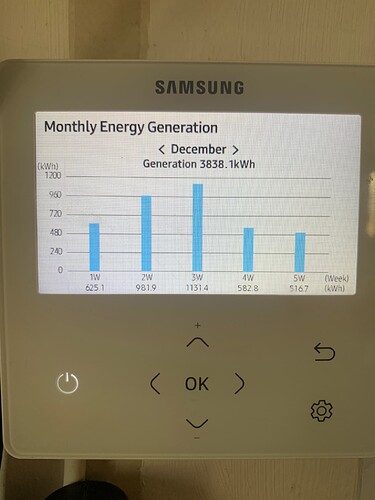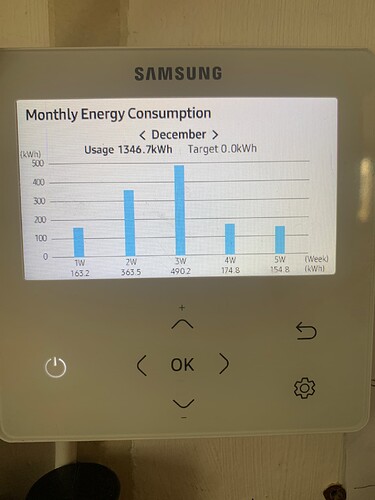Hi Trystan and Brian,
The Following represents my , hopefully, unambiguous , description of my current measurements.
I will buy , or build a better measurement structure when I have more money!
Power Measurement
I measure the Power using a Current Transformer ,CT, clamped across the Heat Pump Mains input.
The CT output Voltage is then fed into an Arduino.
The Arduino “program” performs no Filtering or Windowing on the measured voltage.
The Arduino then calculates the RMS Energy in Joules over a 10 second measurement period.
The RMS Energy over 10 seconds is then stored as a measure of power when multiplied by a Calibration Constant to give RMS Power.
The RMS Power is then put into an accumulator as a measure of RMS Energy.
Both Power and Energy are stored on an File on an SD card,.
Power and energy data
1619.csv (43.7 KB)
The Data consists of the following space separated data fields
Year Month Day Hour Minute Second Power Energy.
Temperature Measurements
Four K type Thermocouple Clamps are attached to
1 The Heat Pump Output
2 The Heat Pump Return
3 The Radiator , or Heat Exchanger Output.
4 The Radiator, or Heat Exchanger Return.
I have stored the Temperatures using a four input K type Temperature Logger.
Temperature Data
01061939 .csv (51.9 KB)
The Temperature data is stored on an SD card in the following Format
AT 2023-01-06 19:39:34 1m 29.3 31.6 30.2 30.3 C
where
2023-01-06 is here the year - Month - Day
1m is the Temperature Sampling Period
29.3 is the Heat Pump Output Temperature
31.6 is the Heat Pump Return Temperature
30.2 is the Heat Exchanger or Radiator Output Water Temperature
30.3 is the Heat Exchanger or Radiator Return Water Temperature.
The Measured Temperatures are here the external Temperatures of the pipes!!
The Temperatures shown here are NOT, therefore, the Water Temperatures within the pipes themselves !
File Formats
I will in future show the Output Files as both PDF and Jpeg.
For 9th Jan to 10Jan the files are now
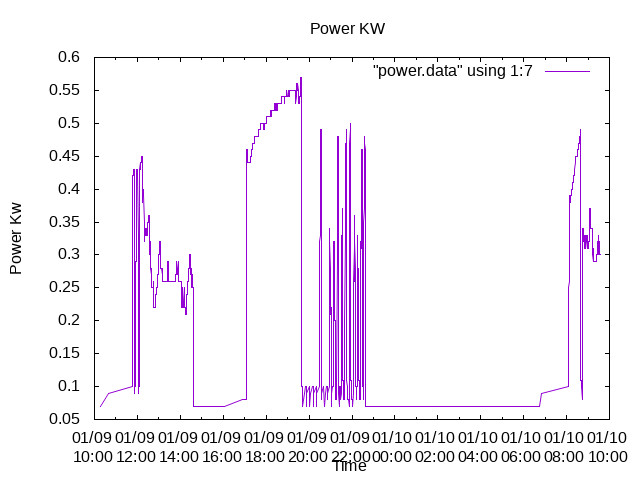
and
power.pdf (9.4 KB)
Energy
energy.pdf (16.2 KB)
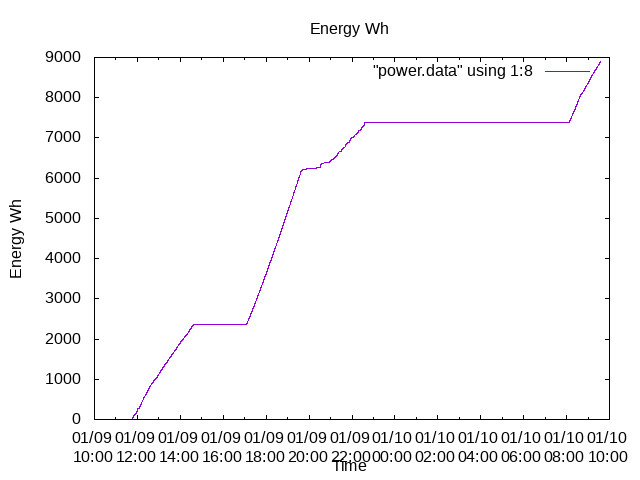
Absolute Temperature
abs_temp_HP.pdf (9.9 KB)
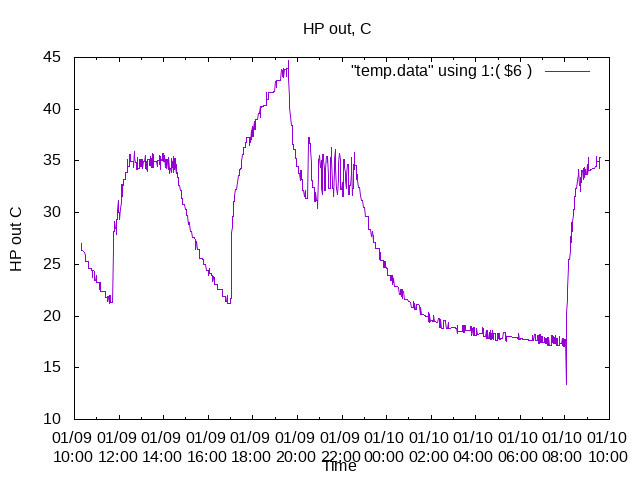
Delta T HP water Temperature
del_flow_temp.pdf (10.5 KB)

Heat Exchanger ( Radiator )
del_rad.pdf (11.0 KB)
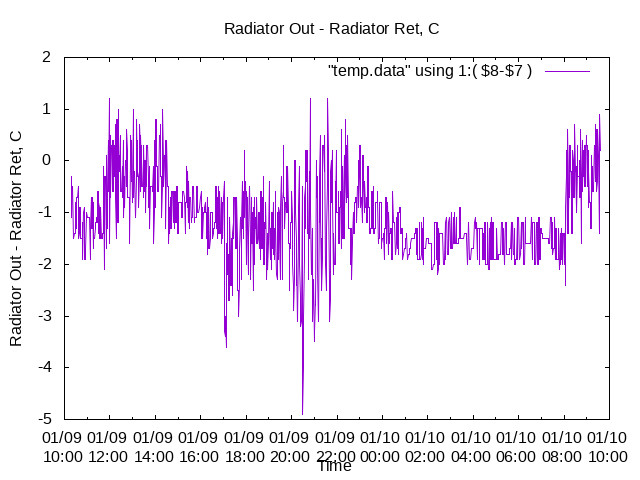
Hysteresis?
Could the Oscillations or Cycling be the result of the Hysteresis setting of the Water Law Thermostat?
The Hysteresis setting appears to be set by selecting from
1: Field option 2091 Option 0 . Neither Water Law Thermostat nor Room Thermostat Switch used.
2: Field Option 2091 Option 1. Room Thermostat only used.
3: Field Option 2091 Option 2. Room Thermostat AND Water Law Thermostat used with Hysteresis = 0.
4: Field Option 2091 Option 3. Room Thermostat AND Water Law Thermostat used with Hysteresis = 1.
5: Field Option 2091 Option 3. Room Thermostat AND Water Law Thermostat used with Hysteresis = 2.
All of these options work on my Heat Pump,
I will experiment with changing the Water Law Thermostat Hysteresis, 2091 options
ian
